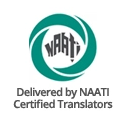A Colorful History
Gujarati, spoken by approximately 62 million people globally, is the official language of Gujarat, a state nestled along India’s western coast. Its roots can be traced back to the 12th century CE, where it emerged from a fascinating blend of languages.
Sanskrit, the ancient language of India, provided the foundation. Arabic, the language of trade, added its influence during Gujarat’s prosperous maritime trade era. Persian, the language of the Mughal Empire, left its mark as well. Even Portuguese, brought by European colonists, subtly enriched Gujarati’s vocabulary. This rich tapestry of influences has resulted in a unique and dynamic language with a complex yet captivating structure.
Distinct Features
Unlike Hindi, which uses two grammatical genders (masculine and feminine), Gujarati employs a three-gender system (masculine, feminine, and neuter) for its nouns. This adds a layer of complexity but allows for more nuanced expression. Nouns are further categorized into three cases: nominative (subject), oblique (object of a preposition), and agentive-locative (indicates the doer of an action or location).
Gujarati’s verb conjugation system is equally rich. Verbs change depending on the tense (past, present, future) and mood (indicative, imperative, conditional) being conveyed. This allows for clear and precise communication of even the most intricate ideas.
The Elegance of the Devanagari Script
Hindi and Gujarati, though utilizing the same Devanagari script for writing, possess distinct visual identities. The basic letter shapes are quite similar, allowing speakers of one language to recognize the letters in the other. However, Gujarati incorporates additional markings called “mātrās.”
These are small vertical headstrokes that are attached to consonant characters to indicate inherent vowel sounds. For instance, the consonant “ka” (क) in Hindi appears the same way in Gujarati. But to represent “ki” (कि) in Gujarati, a vertical headstroke is added above the “ka” (ક). These mātrās differentiate Gujarati visually from Hindi and contribute to the unique character of the Gujarati script.
Gujarati Around the World
While predominantly spoken in Gujarat, India, the Gujarati language boasts a significant global presence. Proud Gujarati-speaking communities can be found in the United Kingdom (particularly London), the United States (especially New York and Houston), East Africa (Kenya, Uganda, Tanzania), and Southeast Asia (Singapore). This global diaspora is a testament to the historical influence of Gujarati culture and the enduring legacy of its language.
Literary and Cultural Impact
Gujarati isn’t just a means of communication; it is the very essence of Gujarati culture. Renowned writers like Umashankar Joshi and Jhaverchand Meghani used Gujarati as their tool. Joshi tackled social issues with his sharp words, while Meghani captured the essence of rural life in his epic stories. Their works, written have captivated audiences for generations.
Gujarati in a Globalized World
In the face of globalization and the dominance of English, efforts are underway to promote and revitalize Gujarati. Being the official language of Gujarat, it is used in education, administration, and media. This ensures its continued use in official spheres and fosters a sense of cultural identity among Gujarati speakers.
The rise of digital communication has seen a surge in online resources and platforms dedicated to Gujarati language learning. These initiatives ensure the accessibility of Gujarati for future generations, allowing them to connect with their heritage and explore the rich cultural tapestry woven through this language.
Gujarati Translation Services
At TranslateSwift, we understand the importance of bridging linguistic divides. Our team of expert Gujarati translators offers exceptional translation services, ensuring accuracy, cultural sensitivity, and seamless communication across languages. Whether you require business documents, travel essentials, or literary masterpieces translated, TranslateSwift is here to help you navigate the Gujarati language with confidence.
